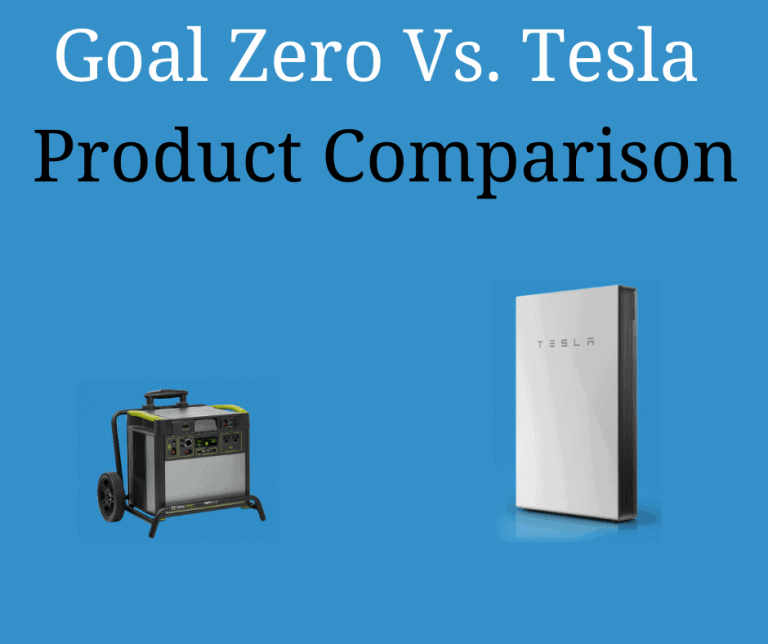Goal Zero Yetis Vs Tesla Powerwalls: Specs and Uses

Given the way solar panels work, an array won’t produce energy without sunlight, which means it needs a way to store power from excess electricity produced by modules in the daytime. While some solar companies have a home battery option, few companies offer selection of battery backup products to fit a range of solar-powered homeowners’ needs.
At Go Solar Group, we believe that every solar homeowner should have access to battery backup, which is why we provide 3 levels of battery backup using Goal Zero and Tesla products.
To determine which of our battery backup products best fits your needs, we’ll compare the core options we offer: Goal Zero Yetis Vs the Tesla Powerwall 2.
Solar Battery Purposes
Not every solar-powered homeowner wants or needs power for their entire home. Some prefer portable options they can use for camping or outdoor gatherings. Others only want enough energy for specific items to last through an outage.
Yeti and Emergency Power
For pack-and-go or essential items, Yeti batteries make great portable additions. The Yeti 1400 weighs 43.7 lbs while the Yeti 3000 weighs 68.6 lbs.
Both of these are portable for most people. The Yeti 3000 even comes with a cart, so homeowners can easily transport it to the desired location.
Powering an Entire Home with the Powerwall
Powering an entire home requires more storage capacity than the Goal Zero Yeti batteries provide. On average, homeowners use about 915 kWh per month, which equals about 30 kWh per day.
One Powerwall 2 can produce 13.5 kWh, which means an average home would need two Powerwalls for whole house battery backup. However, if the homeowner only wanted to offset electricity use or store power for evening use, a single Powerwall works.
Comparing Solar Battery Specs
Once you understand your needs, determining which battery backup option works best boils down to specs of the battery.
Go Solar Group carries the Goal Zero Yeti 1400, Yeti 3000 and the Tesla Powerwall 2. If Yeti batteries don’t provide enough storage, but the Powerwall provides too much, we also carry Goal Zero Tanks, which can increase the storage capacity of either Yeti. Each of these batteries has different capacity ratings, allowing the customer to fine-tune their solar storage to fit their needs.

Solar Battery Type
Several different solar battery types exist, but lithium-ion batteries provide the most power per pound and require the least amount of maintenance.
Lithium-ion Yeti Battery
Both Goal Zero Yeti batteries use lithium-ion technology. Their lithium-ion batteries use a mixture of nickel-manganese-cobalt (NMC). This chemical combination facilitates its high capacity.
Powerwall Battery Type
Tesla’s Powerwall 2 also uses NMC lithium-ion technology. However, unlike the Yetis, and most home batteries, it also has a liquid cooling system, which allows the battery to charge faster and operate better in hot conditions.
Tesla Powerwall vs. Goal Zero Yeti Costs
The Yeti 1400 provides 1.4 kWh of power while the Tesla Powerwall 2 provides up to 13.5 kWh. These products’ price ranges increase commensurately with kWh storage capacity.



Send a Message
Oops! We could not locate your form.